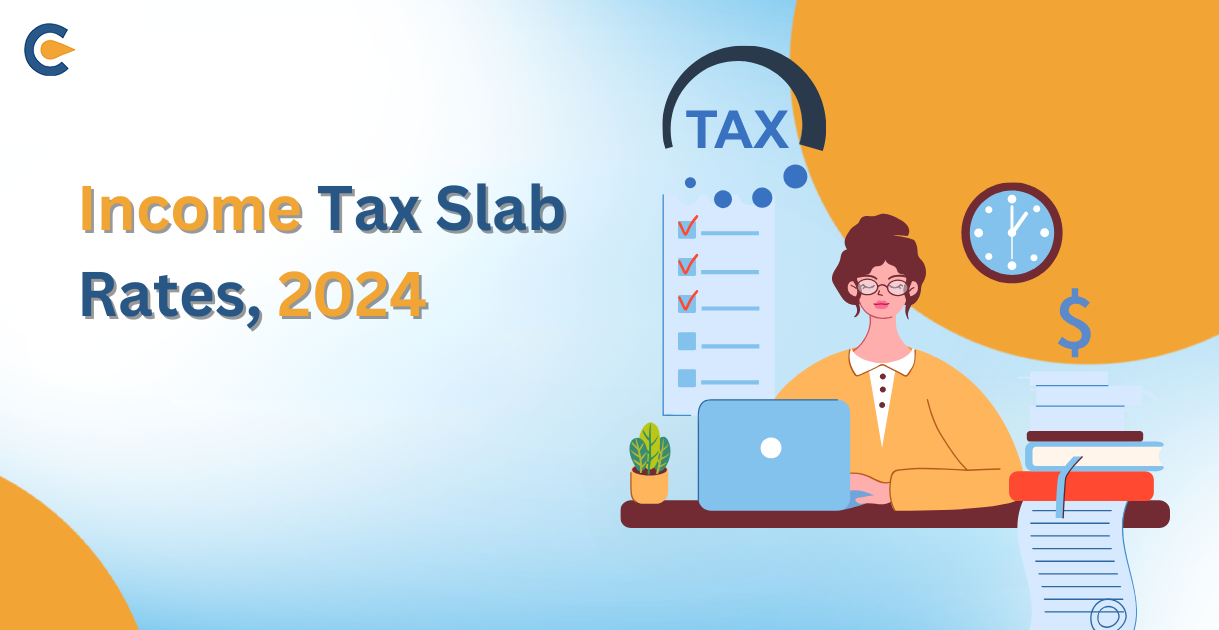The income tax slab rates for 2024 are a crucial factor in establishing the monetary obligations of people and organizations to the Government. These rates are a representation of the progressive system that governments all over the world use to raise money for infrastructure development and public services. For taxpayers, knowing the tax slab rates is essential because it directly affects their investment choices, financial planning, and general well-being. Governments periodically adjust these rates to reflect shifting economic conditions, budgetary constraints, and social welfare goals. Adjustments to guarantee equitable distribution of tax burdens across various income levels, encourage savings, and balance revenue collection are expected to be reflected by the income tax Slab Rates, 2024.
What is the need for Income Tax Slabs?
The Government takes income tax from individuals based on the slabs in which they are. These slabs are determined based on the income level and age group in which they are for a particular financial year. The slab system is made to collect the tax fairly from the individuals since a person earning 3 Lakh rupees and another earning 30 Lakh rupees cannot be put in a similar bracket of the tax system. This is called progressive taxation, where lower income level individuals either have to pay no tax or just a minimum of 5% or 10% based on the slabs in which they are. Based on age, these slabs are divided into three categories –
- Individuals below 60 years
- Senior Citizens between 60-80 years
- Super senior citizens above 80 years of age
New Income Tax Regime
The new income tax regime comes up with a lot more deductions in comparison to the old tax regime, but since it causes so much confusion amongst the taxpayers, here is the gist of the new income tax regime and the income tax slab rates –
- As per the new tax regime, the exemption has been raised from Rs. 2.5 Lakhs to Rs 3 Lakhs for the individuals, which makes everyone follow the taxation of the new regime rather than the old one as per the Income tax laws. Along with this, the maximum tax rate that the government can levy is 30% for individuals with a salary above Rs 15 Lakhs. Income tax slab rates in 2024 are convenient since a lot of exemptions are given to the people.
- Income tax slab rates, 2024, give rebate u/s 87A of the Income Tax Act, which has been hiked to Rs 25,000 for taxable income below Rs 7 Lakhs. This has made a significant impact since it makes individuals not pay any tax with income of up to Rs 7 lakhs.
- The new income tax slab rates benefits pensioners with a standard deduction of Rs 50,000. Apart from this, a deduction in the family pension of Rs 15,000 is also given as per the new regime.
- A surcharge reduction of Rs 5 crore above annual income is given from 37% to 25%, which will reduce the highest tax rate from 42.74% to 39% according to the new income tax policies.
Comparison of Tax rates of 2024 and Old Tax Regime for individuals below the age of 60 years
| INCOME (in Rs.) | New Tax Regime (came before the 2023 Budget) | New Tax Regime (For Financial Year 2023-2024) | Old Tax Regime |
| 0 – 2,50,000 | Nil | Nil | Nil |
| 2,50,000 – 3,00,000 | 5 % | Nil | 5 % |
| 3,00,000 – 5,00,000 | 5 % | 5 % | 5 % |
| 5,00,000 – 6,00,000 | 10 % | 5 % | 20 % |
| 6,00,000 – 7,50,000 | 10 % | 10 % | 20 % |
| 7,50,001- 9,00,000 | 15 % | 10 % | 20 % |
| 9,00,001 – 10,00,000 | 15 % | 15 % | 20 % |
| 10,00,001 – 12,00,000 | 20 % | 15 % | 30 % |
| 12,00,001 – 12,50,000 | 20 % | 20 % | 30 % |
| 12,50,001 – 15,00,000 | 25 % | 20 % | 30 % |
| Above 15,00,000 | 30 % | 30 % | 30 % |
Note –Apart from this, cess and surcharge will be applicable in the tax rates mentioned above.
Income Tax Slab Rates, 2024: Important Points
The essential points to remember in income tax slab rates, 2024 are as follows –
- Under the new income tax slab rates, 2024, a reduction under section 87 A of the Income Tax Act is given for the annual income of up to Rs 7 Lakhs.
- For Super Senior Citizens aged above 80, the tax exemption is given up to an income of Rs 5 Lakhs.
- Form 10-IE had to be submitted to switch from the old tax regime, which was the default for FY 2022–2023, to the new income tax regime. You will be compelled to file under the old regime if the deadline for tax filing passes.
- The default tax regime has been changed to the new tax regime for FY 2023–2024; if any individual wishes to submit a return under the previous tax regime with all of the deductions, exemptions, and losses claimed, you must file before the deadline. You are required to file under the new regime beyond the deadline, forfeit any losses, and give up the majority of your deductions and exemptions that could have been claimed under the old tax regime.
- Income tax slab rates in 2024 are similar for all three categories – Individuals below 60 years, Senior Citizens between 60-80 years, and Super senior citizens above 80 years of age.
Surcharge Rates as per Income Tax Slab Rates, 2024
Surcharge rates are charged to individuals who have a very high income. These charges are charged on the income tax that the individual is liable to pay in a certain financial year. The applicability of the Surcharge rates as per Income Tax Slab Rates, 2024, based on the income level, is as follows –
- If the annual income is above Rs 50 Lakhs and below Rs 1 crore, the surcharge rate would be 10% of the income tax.
- If the annual income is above Rs 1 crore and below Rs 2 crore, then the surcharge rate would be 15% of the income tax.
- If the annual income is aboveRs 2 crore and below Rs 5 crore, then the surcharge rate would be 25% of the income tax.
- For annual income above Rs 5 crores, the earlier surcharge percent was 37% but it has been reduced now to 25%.
- Income of the individuals from the capital gains or dividends, that are taxed u/s 111A (Short-Term Capital Gains on Shares). 112A (Long-term Term Capital Gains on Shares), and 115AD (income tax on foreign institutional investors) will not be subject to the Surcharge rates according to income tax slab rates, 2024.
Conclusion
To sum up, the income tax slab rates in 2024 are a crucial component of fiscal policy that will influence both individuals’ and enterprises’ financial environments. These income tax slab rates are an essential instrument for governments seeking to achieve their goals of balancing revenue production with socioeconomic growth. To maximize their tax obligations, prepare for the future, and make wise financial decisions, taxpayers need to be aware of the current tax slab rates. The Income Tax Slab Rates 2024 can play a key role in making an environment that is favourable to sustainable development and prosperity by promoting justice, transparency, and efficiency in the tax system.
If you are searching for some taxation advice or finding it hard to file your Income Tax Report, you can get in touch with the Corpbiz team to make this easy for you. We provide tax-related services to individuals and businesses.
Frequently Asked Questions
Why are slabs made for collecting Income Tax?
The slab system is made to collect the tax fairly from the individuals since a person earning 3 Lakh rupees and another earning 30 Lakh rupees cannot be put in a similar bracket of the tax system. This is called progressive taxation where lower income level individuals either have to pay no tax or just a minimum of 5% or 10% based on the slabs in which they are.
Is there an introduction of a new tax slab for FY 2024-25?
No, there has been no introduction of any income tax slab rates for the fiscal year 2024-25 and the taxpayers can pay the income tax based on the slabs in which they fall. However, they have the option to choose either the old tax regime or the new tax regime on their own but if they fail to file an ITR before the due date then they have to file an ITR based on the new tax regime.
What is the general exemption limit for individuals below 60 years as per the new tax regime?
The general exemption limit for individuals below 60 years as per the new tax regime is Rs 3 Lakhs.
When can I consider opting for the old tax regime?
Both old and new tax regimes are beneficial for individuals based on their needs, however, if you invest up to a certain extent then you should opt for the old tax regime since it has many exemptions that are not there in the new tax regime.
How is the new tax regime different from the old tax regime?
The new income tax slab rates comes with reduced tax rates for individuals having low annual incomes and this is beneficial for people who don’t make much investments and have low salary packages or yearly earnings.
What is the most highlighted change brought by the new tax regime?
The most highlighted change brought under the new tax regime is that the exemption has been raised from Rs. two and half lakhs to Rs 3 Lakhs for the individuals which makes everyone follow the taxation of the new regime rather than the old one as per the Income Tax laws.
Which Act governs the Income Tax exemptions?
The Income Tax Act of 1961 governs the income tax exemptions.
What is the tax slab for an individual earning Rs 11 Lakh as per the new tax regime?
The tax slab for an individual earning Rs 11 Lakh per annum as per the new tax regime is 15%.
What is the tax liability of an LLP or a Partnership firm?
The tax liability of an LLP or a Partnership firm is as follows –
· They are taxed at 30% of the annual income
· If the income is exceeds Rs 1 crore, a surcharge of 12% will be levied.
· An additional 4% of Health and Educational cess is charged.What benefit does the new tax regime provide under section 80C?
The new tax regime does not provide any deductions under section 80C of the Income Tax Act, of 1961. There were no changes made in the said section while announcing the interim budget by the finance minister.
Read Our Article: Income Tax Slabs For Financial Year 2023-2024











